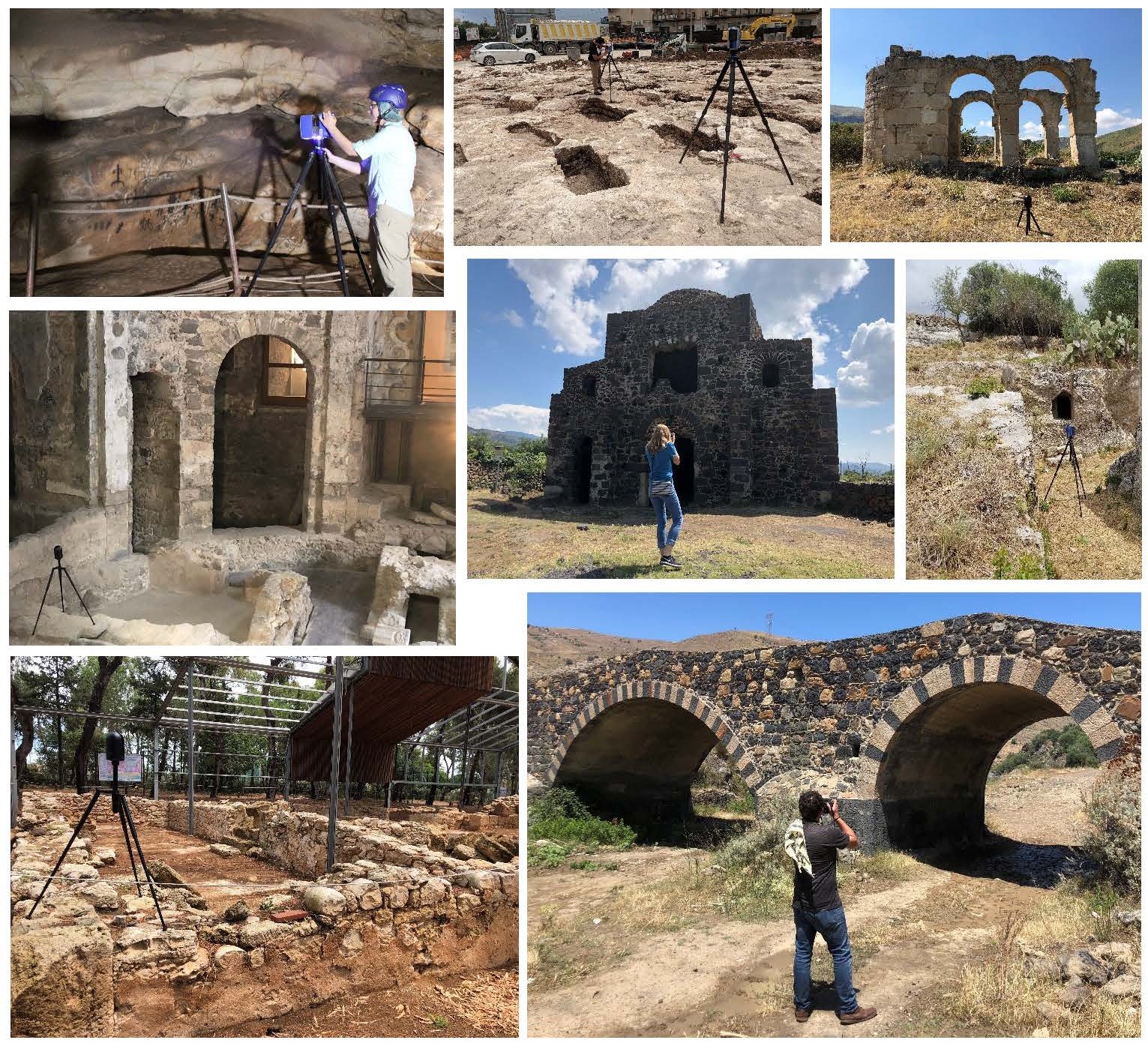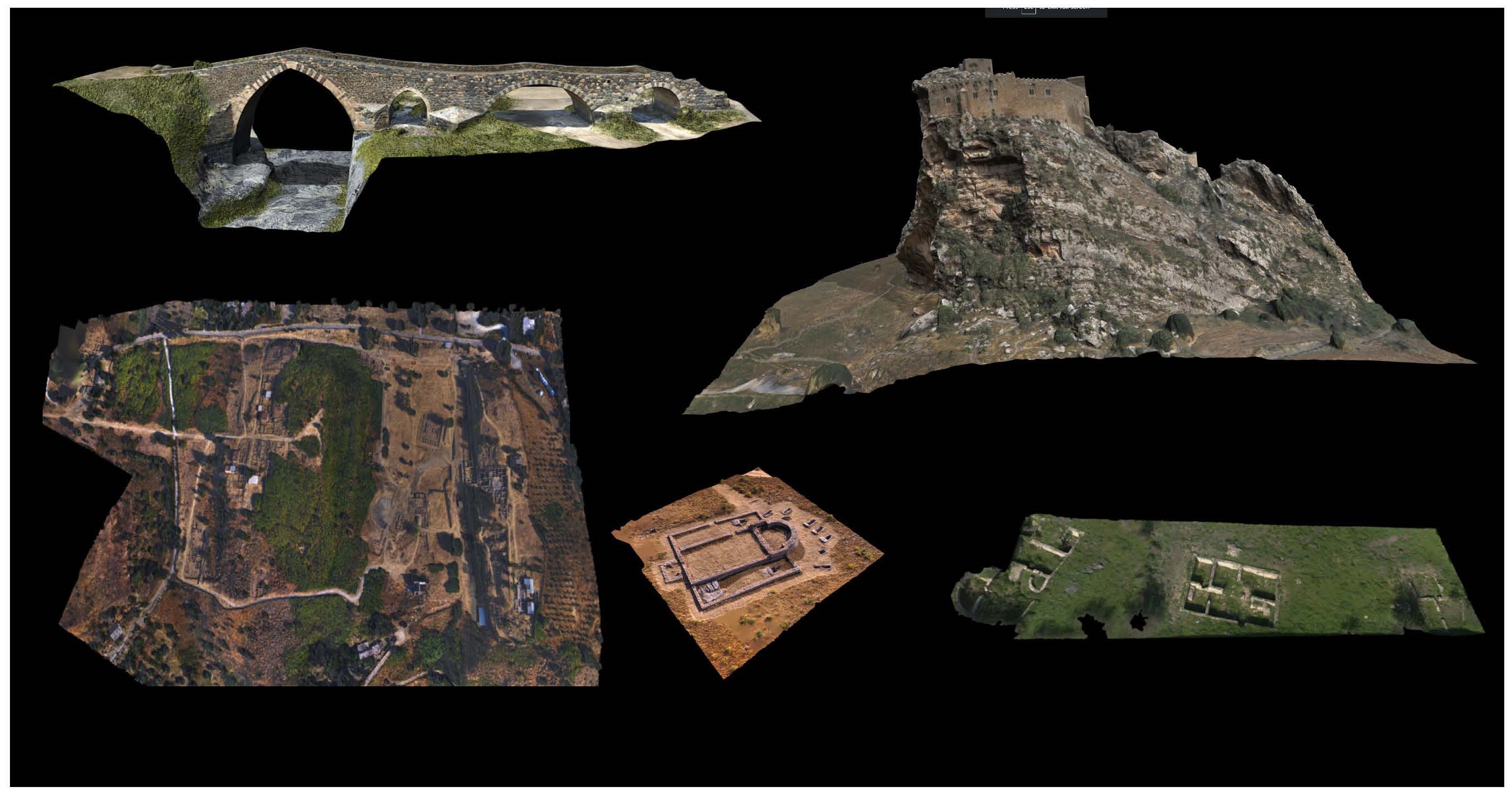Research
Virtual Sicily
Virtual Sicily, is an interdisciplinary research project aimed at the 3D digitization of that Sicilian archaeological heritage deemed physically or digitally inaccessible, relatively unknown or poorly documented, potentially endagered or in need of a stronger digital presence online. The project, run from 2017 to 2019, was punt hol due to the global pandemic and resumed in 2025.
A remarkable number of Prehistoric, Classical, Late Antique and Medieval archaeological sites were 3D digitized via terrestrial laser-scanning and terrestrial and aerial digital photogrammetry.

Prehistoric: Genovese cave at Levanzo (Paleolithic/Neolithic), Necropolis of Cozzo del Pantano (Middle Bronze Age)
Greek: City of Morgantina (Classical/Hellenistic), Necropolis of Santa Panagia at Siracusa (Archaic)
Roman/Late Roman: Roman baths and church of the Rotunda at Catania (3rd CE - 6th CE)
Late Antique to Late Medieval: Nunziatella church at Mascali (5th-7th CE), Cuba di Santa Domenica at Castiglione (6th-7th CE), Saint John Basilica at Palagonia (6th-7th CE), Arab Mosque of Segesta (12th CE), Ponte dei Saraceni at Adrano (12th CE), Sofiana (4th-12th CE), Chiaramonte Castle at Mussomeli (14th CE). Sanctuary of Madonna della Rocca, Carmine Church and Monastery and Church of Minor Friars at Alessandria della Rocca (18th CE).
The 3D digitization protocols adopted by USF IDEx team, deriving from years of field-works in pursuit of best practices, allowed the virtualization of large scale and complex archaeological and historical complexes.

Media:
3D model of the Greek theater of Morgantina generated via terrestrial laser-scanning
Trailer of the Alessandria della Rocca Virtualization Project
3D Resources:
Greek city of Morgantina, agora district
Chiaramonte Castle at Mussomeli